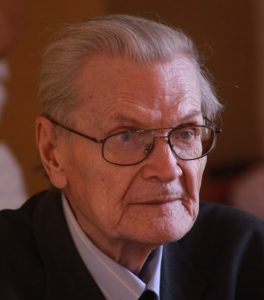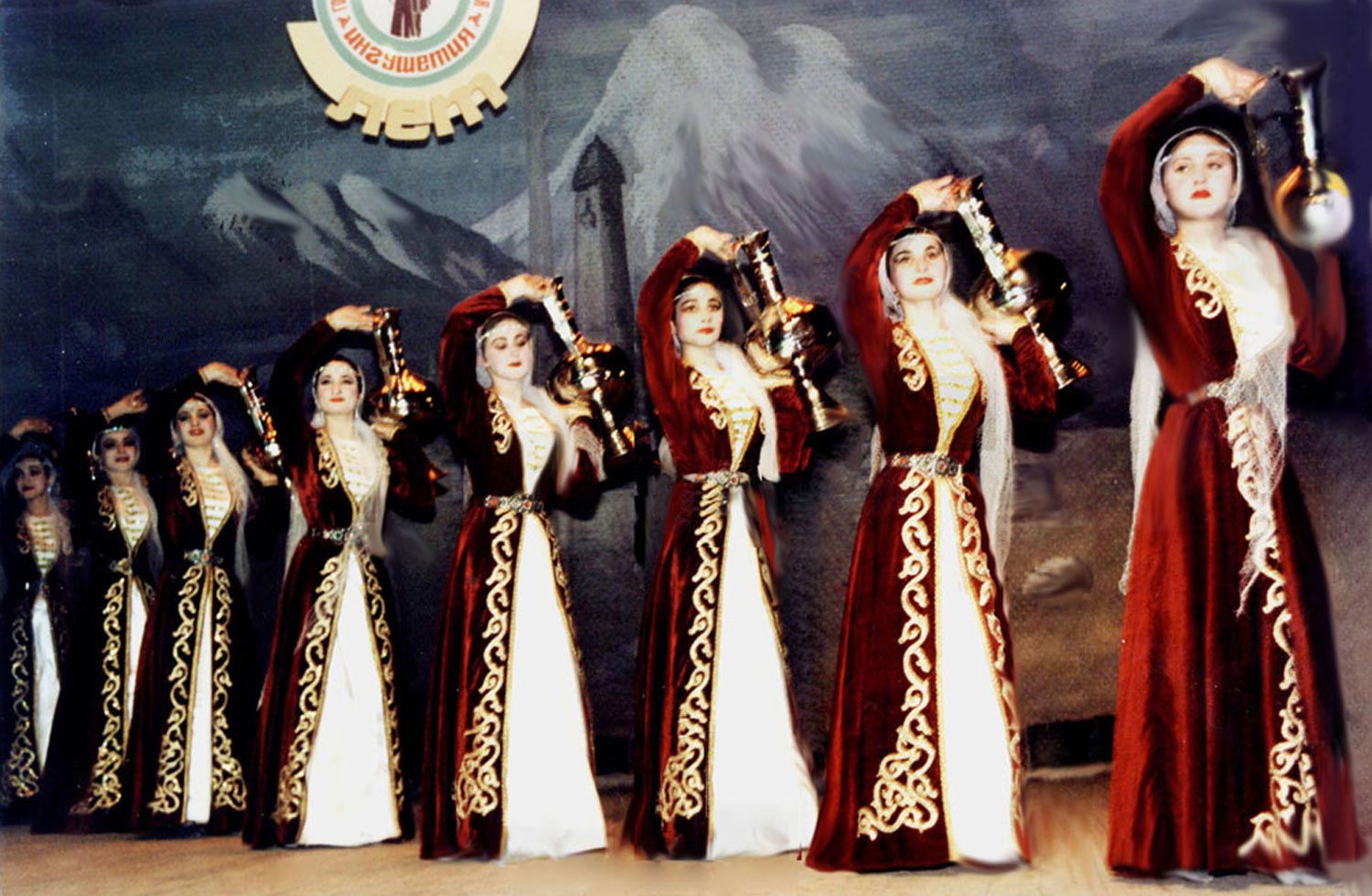
Grand Doctor of Philosophy, Professor, Academician A.N. Iezuitov
WHAT IS THE SOUL
Modern science is highly concerned with the issue of what the soul is. Moreover, the issue is regarded from a one-side limited materialistic point of view.
Back in 1921, Duncan McDougal, the physicist, first weighed the body of a living person, and then his own body immediately after his death, and established that the difference between the weights was about 21 g. McDougall decided that the soul of a person that left the body had such a weight. Skeptical scientists put the weight loss down to the inevitable evaporation of water from the dead body.
Gerard Naum, the physicist, conducting similar experiments, considered that the soul has weight as the energy emitted by the body, and after the death of a person, it moves to some other place.
Bruce Grayson, the psychiatrist, studying the state of people experiencing clinical death, concluded that the soul is something that needs further research.
Tim van Lommel, the cardiologist, believes that at the moment of death, a person’s consciousness as well as the soul expands and leaves the body, getting into no one knows where.
Olaf Blanke, the doctor-technologist, artificially caused in patients a state similar to “clinical death”, and in this connection recognized the material existence of the soul as a special body state.
Quantum mechanics and its studying of “subatomic phenomena” are also concerned with proving the existence of the soul.
AStuart Hameroff, the anesthesiologist, and Roger Penrose, the mathematician, have developed a model describing consciousness, which they actually identify with the soul, as the result of “quantum processes” occurring in special “microtubules” that are “bioenergetic.” After the death of a person, “quantum information” in the form of a soul is “scattered all over the Universe”, and it is again “collected” as a soul in some living person. Thus, according to Penzour, consciousness and the soul have a “physical nature”, in other words, a material one.
Ahn Stevenson, Psychiatrist and physicist, collects various stories of “reincarnation” (memories of a human’s past life), actually giving it a material character [1].
“Human’s consciousness and soul” – we can easily come across these words in modern science and media.
John Joe McFadden, the human health specialist, John created the theory of conscious electromagnetic information, according to which consciousness, or soul, as the highest form of human nervous activity, is encoded in the brain’s electromagnetic field. The scientist rejects the consideration of consciousness (soul) as a spiritual object, “detached” from matter. Electromagnetic field – the carrier of consciousness (soul) is inseparable from matter. “Consciousness” is the sensation of physically collected information, created by the “photons” encoding this information [2]. This “substance” is individual for each subject. Information is material and photons are quanta. The physical is identical to the material.
Thus, the soul for modern science is a material phenomenon. Basically, one cannot disagree.
As for regarding the soul from the religious point of view, as history shows, it cannot be scientifically substantiated and proven. We don’t deal with them at all. Belief is not a field of science. You can believe in anything. This is the right of every person. In this case, science is unnecessary and unconvincing. The aim of science is the knowledge of real phenomena and its relevant interpretation.
Philosophy of Interaction (Bialism) (PV) offers such a philosophical understanding and explanation of what the soul is.
Let’s start with the fact that the material is, basically, not identical with the real as a phenomenon and as a concept. The material is perceived directly-sensually, the spiritual – by the inner sensation.
The spiritual principle is an internal attitude (predisposition, readiness) inherent in all real phenomena, i.e. existing outside and independently of their perception, direct and mediated, and focused on their material expression. The spiritual principle does not lend itself to any direct measurement and any direct mechanical operations with it, any reduction even to the most “subtle matter” and to the most “elementary particle”.
Soul and consciousness are in no way identical.
From the point of view of PV, the soul is a special type of the spiritual principle, its real subjective-individual existence and manifestation in living nature. The soul is characteristic of living nature itself and, first of all, of a human.
Poets in this case are particularly perceptive.
- Zhukovsky wrote:
As if it’s hidden under the young tree bark,
With this enchanted silence,
The invisible soul’s voice is heard
Talking with my soul.
For F. Tyutchev:
The nature is not what you think
It’s neither a cast, nor a soulless face –
It has a soul, it has its freedom,
It has its love, it has its language
This is how the real “soul interaction” of a human with nature looks like.
The human soul, in essence, is extremely changeable and diverse, sensitive and vulnerable, with a real impact on it.
Let us recall A. Pushkin:
The fire of desire burns in the blood
Your soul is hurt.
And the words of M. Lermontov about Pushkin:
The poet’s soul could not bear
Shame of tiny grievances.
- Martynov believed that “the soul is obliged to work day and night,” since it really exists and functions.
The spirituality is, basically, universal. The soul of a human is unique. There is a true interaction of the general and the special.
Consciousness is a special thought-like ability of the spiritual principle that really exists and receives purposeful practical expression in any subject in his diverse life.
Consciousness is not the same as thinking. Thinking is an internal process of real selection by a person of any of the most effective, materially and spiritually, practical solutions. Thought is a concrete and purposeful real manifestation of such selection. The nature of thinking and the direction of thought can be very different. Consciousness and thinking spiritually and materially interact with each other and to a certain extent with the soul as a special spiritual phenomenon, really sovereign, complementary, mutually enriching each other and partially passing into each other, spiritually and materially.
Soul and consciousness, genetically and functionally, are spiritually significant without being identical.
Each phenomenon has its own and specific spirituality.
The soul and consciousness can positively evolve in their own way in the process of their material and spiritual interaction with each other and with reality as the interaction of material and spiritual principles.
The soul can become more sensitive, responsive, receptive, peaceful, benevolent, and discerning.
Consciousness can become more purposeful, selective and at the same time large-scale, innovative, insightful, humanistic and reasoned.
Such evolution is inexhaustible in its real life significance.
According to PV, life is a constant and self-reproducing interaction of material and spiritual principles as their complementarity, mutual enrichment and partial mutual transition into each other. Death is the destruction and termination of such interaction. The material principle over time exhausts its real possibilities for further existence and development. It doesn’t last forever.
The spirituality is eternal and endless in its existence and development as the revelation and manifestation of its own new qualities and possibilities, truly limitless. The spirituality functionally enters into new interactions with the new material principle. Life goes on.
As a special manifestation of the spirituality, the soul receives its truly eternal creative embodiment.
These are Pushkin’s words, which he confidently expressed about himself:
No, not all of me will die – a soul in a cherished lyre
My ashes will survive and decay will flee.
In reality, this is what actually happened.
Pushkin was convinced that “the poet’s soul will be roused like an awakened eagle” when it is called to action for the common good. The metaphor contains deep real meaning.
Pushkin especially noted the “beautiful impulses of souls.” Meanwhile, in reality, the soul can also have a negative character, to be, as they say, “dark” and even “black”, this must also be kept in mind, considering the soul as a special manifestation of the spiritual principle.
Life is to a large extent the interaction of positive and negative as their mutual manifestation and influence. This process also captures the soul. The soul can and must resist any negativity, which is feasible.
And again we turn to Lermontov:
My soul, as I remember from childhood
Was looking for a wonder
And there is a reason to say that I did.
The soul attracts the innermost attention of painters. Thus, G. Memling (15th century) impressively “paints the lovely soul” of women dressed in velvet [3]. This is the truly enduring charm of his paintings, due to the artist’s deep penetration into the soul of his heroines as a special spiritual reality. This is clearly expressed by Memling in his work, spiritually sublime and spiritually uplifting.
It is not the first year that there have been unsuccessful attempts to verbally accurately and, moreover, in an exhaustive way define the “soul” of a nation, most often exclusively in a positive way.
From the point of view of PV, the soul as a real phenomenon and as a concept is, in principle, too diverse and subjectively individual to give it any one definition, and even several, in relation to a people that forms a multitude of peculiar individuals. That is why all attempts to reduce an entire people to some one or several real manifestations of their soul are in principle futile. For any nation, its “soul is mysterious.” Moreover, the soul is not at all a purely evaluative phenomenon and concept (one is better or worse than the other). Souls are very different, and they are internally changeable.
Real exhaustion, internal and external, of the material principle of life, causes the death of the organism.
It should be noted that being both as a real phenomenon and as a concept is broader and more stable than life, which is finite. Being is the real existence of something as such, internally and organically including the fundamental and endless interaction of the material and spiritual principles. Consciousness enters into such interaction. Being directly and completely does not determine consciousness. Consciousness largely orients and directs being itself.
In reality, being in its own way is always and in everything “binary” (material-spiritual).
As phenomena and as concepts, “dualism” and “binary” are different in principle. “Dualism” means the parallel and independent existence of any two principles, their absolute incompatibility. “Binary” means real existence in a constant and diverse interaction of two principles, ultimately material and spiritual. Life is a special kind and a real manifestation of the “binary” being, which is eternal.
There is earthly and natural life as a person’s life. A person also has his “otherness”, which occurs after the death of a person. It is also real, since “otherness” is perceived by the person himself, after his death, at least temporarily in “otherness”, as a special reality that exists outside and independently of the person, his perception, and actually represents the interaction of the “supermaterial” and “super-spiritual” ” started.
A person, having been in a state of “temporary (clinical) death”, turns out to be unable, returning to earthly existence from “otherness”, to accurately convey his impressions of being in “otherness” in words familiar to a person, so these impressions are unusual. At the same time, they are real.
A person who has temporarily been in “otherness” feels himself internally transformed and no longer experiences the fear of death. He also has an indomitable desire to interact in his earthly life, material and spiritual, with everything and everyone. This is the attractive power of “binary” interaction inherent in “otherness”.
All of the above is evidenced by numerous and indisputable facts presented in various media and reported by people who have been in “otherness”.
“Otherness” and the soul are real, albeit in a special way.
There is reason to say that after the death of any person, his soul falls into “otherness”. This happens to every person. A special question is what exactly “otherness” will be for each person and what kind of “otherness” he will be worthy for his earthly existence. Over time, we will find out. Most likely, human interaction with everything and everyone.
A person can stay in “otherness” forever, with his own consent and with the consent of “otherness” itself. A person can return to earthly life from “otherness”, having temporarily stayed in it, if he is called to this by “otherness” itself and if he internally perceives the earthly call about the necessity of his being in earthly life and follows it. This is also reality.
In short, in order to understand and explain what the soul is, one does not need to be soulless. PV is truly spiritualized [4]. The well-known call “do no harm” is especially applicable to the soul.
Literature:
- Mazanova G. Science in pursuit of the soul // The X-Files. Dossier. Special issue, 2011, No. 3. S.98-104.
- Vedeneeva N. Soul went into a magnetic field // Moskovsky Komsomolets: PPE, 2020, November 4-11. P.24.
- Fromantin E. Old Masters. Belgium – Holland (translated from French) M., 1914.C.409.
- Jesuits A. “Philosophy of interaction” as the basis of “Quantum theory” // Spirit of the time, 2018, №23, Septembe



